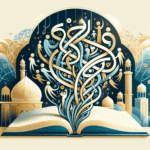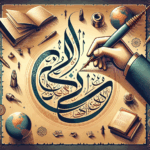How to Recognize Patterns in the Arabic Alphabet
Learning a new language is like solving a fascinating puzzle, and Arabic is no exception. One of the most intriguing aspects of Arabic is its beautiful alphabet. If you’ve ever been curious about recognizing patterns in the Arabic script, you’re in the right place! Let’s dive into how you can make sense of this wonderful alphabet, step by step. 🌟
Table of Contents
1. Introduction to the Arabic Alphabet
2. Understanding the Basics
3. Spotting Patterns in Letters
4. Connecting Letters: The Art of Cursive
5. Conclusion
6. FAQ Section
1. Introduction to the Arabic Alphabet
The Arabic alphabet consists of 28 letters and is written from right to left. This can be a bit of an adjustment if you’re used to left-to-right scripts, but it’s all part of the fun! Each letter can take on different forms depending on its position in a word, which adds a layer of complexity—and beauty—to the language.
2. Understanding the Basics
Before diving into patterns, it’s essential to familiarize yourself with the basic shapes of the Arabic letters. Unlike the Latin alphabet, where letters stand alone, Arabic letters connect to each other, creating a fluid, cursive script.
Here are a few things to keep in mind:
👉 Letters change shape based on their position (beginning, middle, end, or isolated).
👉 Some letters don’t connect to others from the left, which affects how words look.
👉 Vowels are often not written, relying on context and pronunciation.
3. Spotting Patterns in Letters
Recognizing patterns in the Arabic alphabet involves noticing similarities in letter shapes and sounds. Here are a few tips to help you:
🧐 Group Similar Shapes: Some letters have similar shapes but differ in the number of dots above or below them. For example, ب (ba), ت (ta), and ث (tha) all share the same base shape but differ in dots.
🔍 Look for Dots: Dots are essential in distinguishing between letters. Pay close attention to their number and placement.
📏 Understand Root Patterns: Many words in Arabic are built on three-letter roots, which can help you predict meanings and forms.
4. Connecting Letters: The Art of Cursive
One of the unique features of Arabic is its cursive nature. Words are typically connected in a flowing script, making it crucial to understand how letters connect.
🖋️ Practice Writing: Begin by practicing simple words, focusing on how each letter connects to the next. This will help you recognize patterns naturally.
✒️ Observe Native Writing: Watching Arabic handwriting can provide insight into natural letter connections and variations.
5. Conclusion
Recognizing patterns in the Arabic alphabet is a rewarding experience that can significantly enhance your language learning journey. With practice and patience, you’ll soon find yourself reading and writing Arabic with greater ease and confidence. Remember, the key is to enjoy the process and appreciate the beauty of this ancient script. 🌺
6. FAQ Section
Q1: How can I quickly differentiate between similar-looking Arabic letters?
A: Focus on the number and placement of dots. Many letters share the same basic shape but differ in dots.
Q2: Why are some Arabic letters not connected?
A: Some letters, known as „non-connecting letters,“ only connect from the right and not from the left, affecting their connection in words.
Q3: Are there any apps to help recognize Arabic letters?
A: Yes, there are several apps like „Write It! Arabic“ and „Learn Arabic Alphabet“ that offer interactive ways to practice recognizing and writing Arabic letters.
Embrace the challenge, and happy learning! 🌟





